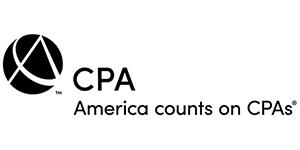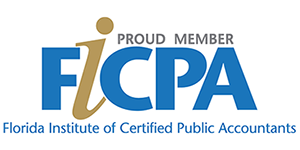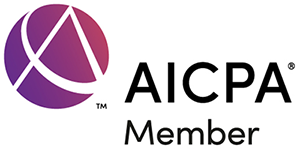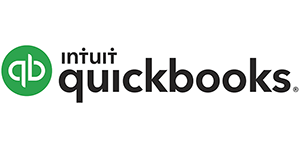Miss last month's newsletter? No problem. We keep the last 8 months of newsletters here for you to read.
The High Cost of Worker Misclassification: Tax Implications and Risks
The consequences of misclassifying an employee as an independent contractor can be costly. You could be liable for back taxes (including the employee’s shares of unpaid payroll and income taxes), penalties and interest. There may be serious nontax consequences as well.
How Important Is This?
Businesses must withhold federal and state income taxes and the employee’s share of Social Security and Medicare taxes from employee wages. They must also pay the employer’s portion of Social Security, Medicare and unemployment taxes for employees. Generally, none of these obligations apply to the business for workers who are independent contractors.
Misclassifying an employee as an independent contractor can result in liability for unpaid payroll taxes, penalties and interest. You may also owe the employee’s share of taxes.
Beyond taxes, misclassification can mean liability for minimum wages, overtime pay, benefits, workers’ compensation, and state disability insurance. Ensuring proper classification helps avoid costly legal and financial consequences.
What Factors Should You Consider?
Determining the correct classification requires reviewing the key factors that the IRS evaluates. No single factor is conclusive; all must be taken into account.
Here are the three categories of factors the IRS assesses:
1. Behavior control. Who controls what work is done and how it’s performed? A higher degree of control suggests the worker is likely an employee. It’s important to consider how much training and education the business provides a worker to do the job.
2. Financial control. Who controls the economic aspects, such as how the worker is paid and how expenses are reimbursed? Independent contractors generally have financial risk. They may work for flat fees and work for more than one business.
3. Type of relationship. Workers hired for an indefinite period and performing core business functions are more likely to be employees.
Labeling a worker as an independent contractor in a written contract doesn’t make it so. However, it may serve as evidence in a dispute between parties.
How Does Remote Work Affect Classification?
It’s tempting to think that if a person works for you remotely, he or she automatically qualifies as an independent contractor. Not so fast! Even if the individual chooses to work remotely, the classification is still subject to scrutiny.
The key considerations are the same as for on-site workers, such as whether you, as the business owner, have the right to control the details of the worker’s services and how they’re performed.
Worried You’ll Make a Mistake?
Don’t underestimate the importance of this issue. The consequences of misclassification can indeed be severe. Using a reasonable basis for classifying workers may relieve penalties and employment taxes.
You can ask the IRS to weigh in by filing Form SS-8, “Determination of Worker Status for Purposes of Federal Employment Taxes and Income Tax Withholding.” Before you do this, contact the office and ask for a review of the details.
Beyond Federal Taxes
Even if you’re confident in your classification of workers for federal tax purposes, it’s essential to consider how they’re treated under state taxation and federal and state wage and hour regulations. Classifying workers as employees in some cases and independent contractors in others can create significant administrative challenges, so evaluate their status comprehensively before making a final decision. Don’t risk a mistake. Answers to your questions are a phone call away.

Your Return Is Filed! 3 Things to Keep in Mind Post-Filing
Most people feel some relief after filing their income tax returns each year. But even if you've successfully filed your 2024 return, you may still have questions. Here are three common ones.
1. What's the Status of Your Refund?
You can learn the status of your tax refund using an IRS online tool. Go to irs.gov and click on "Get Your Refund Status."
You'll need your Social Security number, filing status and refund amount.
2. What if You Forgot to Report Something?
In general, you can file an amended tax return and claim a refund within three years after you filed your original return or within two years of the date you paid the tax, whichever is later. So, if you filed your 2024 tax return on April 15, 2025 (the due date for 2024 returns), and barring any changes in the rules, you'll generally have until April 18, 2028 (because April 15 is a Saturday and April 17 is a holiday in Washington, DC) to amend your return.
However, there are a few situations when you're allowed more time to file an amended return. One example is claiming a bad debt deduction. Generally, you may amend your tax return to claim a bad debt for seven years from the tax return's due date for the year the debt became worthless.
3. How Long Must You Keep Tax Records?
Retain tax records as long as the IRS can audit your return or assess additional taxes. The statute of limitations is generally three years after filing, meaning most 2021 tax year records can now be discarded if you filed by the April deadline in 2022. If you filed an extension, keep records from the extended due date for three years.
The statute extends to six years for substantial underreporting (over 25% of gross income). There's no time limit if you never filed or filed fraudulently. So, keep actual tax returns indefinitely to prove legitimate filing.
Retirement account records should be kept until the account is depleted, plus three (or six) years. Real estate and investment records should be kept for as long as you own the asset, plus at least three years after selling, or six years to be extra cautious.
Being diligent with recordkeeping can help you avoid IRS issues down the line.
Still Have Questions?
Contact the office for help finding answers about your refund, filing an amended return or record retention.

Traveling With Your Spouse on Business? Know What's Deductible
If you own a company and travel for business, you may wonder whether you can deduct all the costs of having your spouse accompany you on trips. It’s possible, but the rules are restrictive.
When Your Spouse Is Also Your Employee
If your spouse is your employee, you may be able to deduct most of his or her travel expenses. But there are strict rules: You can deduct travel costs only if his or her presence on the trip serves a bona fide business purpose. For example, if you’re attending a trade show and your spouse is one of your company’s leading sales reps, negotiating and closing sales at the show would likely qualify as a bona fide business purpose. But it isn’t sufficient for your spouse to merely be “helpful” in incidental ways, such as by typing your meeting notes.
Similarly, a spouse’s participation in social functions, such as being a host or hostess, generally isn’t enough to establish a business purpose. That is, if his or her purpose is to develop general goodwill for customers or associates, this is usually insufficient. Further, if there’s a vacation element to the trip (for example, if your spouse spends time sightseeing), it will be more challenging to establish a business purpose for his or her presence on the trip. On the other hand, a bona fide business purpose exists if your spouse’s presence is necessary to care for your serious medical condition while you’re traveling for business.
If these tests are satisfied in relation to your spouse, you can claim the typical deductions allowed for business travel away from home. These include the costs of transportation, meals, lodging and incidentals such as dry cleaning and phone calls.
When Your Spouse Isn’t Your Employee
If your spouse isn’t your employee, then even if your spouse has a bona fide business purpose for making the trip with you, you won’t likely qualify to deduct all of his or her travel costs. But you may still be able to deduct a substantial portion of the trip’s costs. This is because the rules don’t require you to allocate 50% of your travel costs to your spouse, only any additional costs you incur for him or her.
For example, in many hotels, the cost of a single room isn’t much lower than a double. If a single room would cost you $150 a night and a double room would cost you and your spouse $200, the disallowed portion of the cost allocable to your spouse would only be $50. In other words, you can write off the cost of what you’d have paid traveling alone. To prove your deduction, ask the hotel for a room rate schedule showing single rates for the days you stay.
If you drive your car or rent one, the cost will be fully deductible even if your spouse is along. Of course, public transportation, meals and any separate expenses incurred by your spouse won’t be deductible.
What Can You Deduct?
While the employee and bona fide business purpose requirements prevent tax deductibility of a spouse’s travel costs in most cases, there are circumstances when some expenses can be deducted. Contact the office if you have questions about this or other tax-related topics.

Helping a Family Member Buy a Home
Making a family loan isn’t the only way to assist a loved one with purchasing a home. If you aren’t concerned about being paid back, a straightforward option is gifting cash. In 2025, you can give up to $19,000 to anyone without federal gift tax consequences under the gift tax annual exclusion.
If your loved one is married, you can gift up to $38,000 to the couple tax-free. If you’re married, you and your spouse can jointly give up to $76,000 to the couple, all without federal gift tax consequences (4 x $19,000).
Gifts exceeding these limits reduce your lifetime gift and estate tax exemption, which for 2025 is $13.99 million ($27.98 million for married couples). State tax consequences must also be considered. Contact the office to explore the best approach for your situation.

Tax-Advantaged Savings Accounts That Benefit Those With Disabilities
Eligible individuals with disabilities and their family members can use Achieving a Better Life Experience (ABLE) accounts to pay for qualified expenses. These are savings or investment accounts that don’t affect eligibility for government assistance programs. Contributions aren’t tax deductible, but withdrawals used for qualified expenses are tax free, similar to 529 education savings plans.
The 2025 contribution limit is $19,000. Qualified expenses include housing, education, transportation and basic living expenses. ABLE account beneficiaries may be eligible to claim the Saver’s Credit for a percentage of their contributions. This is a nonrefundable credit for people who are 18 or older, aren’t dependents or full-time students, and meet certain income requirements. Contact the office for more information.

Facilitate IRS Transactions With a Business Tax Account
The IRS Business Tax Account provides information to sole proprietors, partners of partnerships, and shareholders of S corporations and C corporations. Eligible business taxpayers who set up an account can use the hub to make electronic payments, schedule or cancel future payments and access other tools.
Business taxpayers can also view their current balances, payment history and other business tax records, as well as digital copies of select IRS notices. A newly added Income Verification Express Service enables lenders to easily access the income records of a business borrower (if authorized by the taxpayer). Here’s more, including a link to create a business tax account for your company: www.irs.gov/businesses/business-tax-account

3 Ways to Receive Payments in QuickBooks Online
One of the biggest challenges small businesses face is managing a steady cash flow. Keeping income ahead of expenses is a constant balancing act. QuickBooks Online can help. With easy-to-use forms and a convenient mobile app, it helps you track and deposit incoming payments with ease.
Do you ever receive instant payments for certain products or services? Ever need to record a sale on the go, for your records and your customer’s? Or maybe you send out invoices and want to ensure payments are accurately logged once they come in. QuickBooks Online has you covered in all these scenarios. Plus, it offers automation tools that speed up the payment process so you can get paid faster and focus on growing your business.
Let Customers Pay Online
If your business sends invoices for products or services, QuickBooks Online makes it easy to record customer payments. While you can manually enter payments, there’s a faster, more efficient option: QuickBooks Payments. This built-in merchant service lets you accept credit card and bank payments electronically, helping you get paid faster and streamlining your cash flow.
Once QuickBooks Payments is set up in QuickBooks Online (contact the office if you need help), your invoices will include integrated payment options for credit cards and electronic checks. Each invoice will feature a payment button, allowing customers to easily enter their payment information. You’ll be able to track when an invoice is viewed, paid and deposited. Simply open your list of invoices and click on one to view its details. A timeline panel will slide out from the right side, showing the invoice’s history and status. Plus, you can opt to receive notifications for invoice activity.
If you prefer to record payments manually, find the unpaid invoice in your list and click the Receive Payment link at the end of the row. This opens the Receive Payment screen, where you can fill in any missing details and save. You can also find the same link on the invoice screen itself or from the Invoices page (SalesInvoices).

There’s generally no cost for setting up a pay-as-you-go account in QuickBooks Payments. There are only per-transaction fees, depending on whether:
- They’re ACH bank payments,
- They’re payments that come in through an invoice (Apple Pay, Google Pay, credit cards, etc.),
- The payments are keyed in, or
- You swipe a card.
There’s also a small flat fee per transaction. Payments that come in before 3 p.m. PT should be in your account the next business day.
Accept Payments Through GoPayment
To take payments while you’re on the road, you’ll need a free mobile card reader from Intuit that connects to your smartphone. It supports tap, chip and digital wallet payments. You can also manually enter card details.
To process transactions, you’ll need to download the GoPayment app, available for iOS and Android. The app lets you add product names, prices and images to make checkout faster and easier. Multiple layers of security are in place to help protect your data during mobile transactions.
Receive Instant Payments
Sometimes, you’ll receive payment right after delivering a product or service. In these cases, QuickBooks Online allows you to create and provide a sales receipt on the spot.
Just click +New in the upper left corner, then select Sales Receipt in the Customers section. The form that opens will look similar to an invoice or estimate. Choose the customer in the upper left corner and fill out the remaining details as you normally would. When you’re finished, click Save and send to email the receipt. You’ll have the option to preview it before sending and to print it.
The Undeposited Funds Account
If your customer paid you on the spot with a credit card, that payment would be processed in your QuickBooks Payments merchant center. But what about a physical check? QuickBooks Online defaults to the Undeposited Funds account for sales transactions. You can change this, but it’s not recommended. This account temporarily holds payments, typically cash and checks, that haven’t yet been deposited into your bank.
It’s a good idea to review this account regularly to ensure you’re not leaving funds languishing. Hover your mouse over the Transactions link in the toolbar and click Chart of Accounts. Scroll down until you find it, as pictured below.

To combine the transactions in the Undeposited Funds account to make a bank deposit, click +New in the upper left corner and then click Bank deposit under Other. Make sure the Account in the upper left corner is set to the account where you want to deposit the funds. Click the box in front of each check you want to deposit (or Select all), then Save.
To see your deposit information, click Reports in the toolbar, then click Deposit Detail under Sales and Customers. You’ll have to list the deposits individually on your physical deposit slip. Make sure that the slip matches what you see in QuickBooks Online.
If you need help or have questions, feel free to contact the office to schedule a consultation. While the process of receiving payments isn’t overly complicated, it’s essential to ensure every payment is recorded accurately and deposited correctly into your bank accounts.

Upcoming Tax Due Dates
May 15
Calendar-year exempt organizations: File a 2024 information return (Form 990, Form 990-EZ or Form 990-PF) or file for an automatic six-month extension (Form 8868). Pay any tax due.
Calendar-year small exempt organizations: File a 2024 e-Postcard (Form 990-N) if not filing Form 990 or Form 990-EZ.
Employers: Deposit nonpayroll withheld income tax for April if the monthly deposit rule applies.
Employers: Deposit Social Security, Medicare and withheld income taxes for April if the monthly deposit rule applies.
June 10
Individuals: Report May tip income of $20 or more to employers (Form 4070).

Why Succession Planning is Crucial for Business Success

When you’re focused on the daily demands of running a business, it’s easy to put off thinking about the future. But there’s one strategic move you shouldn’t delay: succession planning. Whether you’re a solo entrepreneur, part of a family-owned company, or leading a fast-growing team, having a plan for what happens next isn’t just wise – it’s essential for long-term success.
Succession planning isn’t just about retirement. It’s about preparing your business to thrive no matter what changes lie ahead. When done right, it gives you peace of mind, continuity, and a stronger foundation for growth.
What Is Succession Planning?
Succession planning is the process of identifying and preparing people to take over leadership roles and key responsibilities within your business. It ensures that your company keeps moving forward, even if you step away suddenly or gradually over time.
This plan can cover various roles, from top-level executives to department heads or key specialists. If someone critical to your business left tomorrow, would you have someone ready to take their place? Succession planning answers that question before it becomes a crisis.
Why It’s More Than Just a Retirement Plan
Many business owners mistakenly believe succession planning only applies when they’re ready to retire. In reality, it’s about being prepared for any transition, whether expected or not.
A strong succession plan provides continuity and stability. It ensures your business keeps operating smoothly during leadership changes, minimizing disruptions that could harm relationships with clients, staff, and vendors. It also increases employee confidence and retention. When team members see that internal growth is possible, they’re more likely to stay and invest in their future with your business.
Succession planning isn’t just reactive; it’s a strategic development tool. It gives you time to build up your next generation of leaders, ensuring they align with your company culture and goals. Plus, if you ever plan to sell or pass down your business, a clear plan increases its value and gives everyone involved greater peace of mind.
Key Elements of a Strong Succession Plan
Creating a smart succession plan doesn’t happen overnight. It’s a process that takes thought, collaboration, and regular review. Here are the core elements to include:
- Identify Critical Roles: Determine which positions would significantly impact operations if left unfilled.
- Assess Potential Successors: Look within your team for individuals who have the skills to grow into leadership roles.
- Develop Training Plans: Create opportunities for skill-building, mentorship, and gradual responsibility shifts.
- Create a Timeline: Establish clear milestones, especially if you’re planning a future exit or leadership handoff.
- Review and Update Regularly: A succession plan isn’t a one-and-done task. Revisit it yearly to adjust for changes in staff, goals, or business conditions.
How to Start Your Succession Planning Process
If you’re not sure where to begin, the most important step is simply to start the conversation. Whether it’s with your leadership team, family members, or trusted advisors, clarity and communication are key.
Begin early, even if you’re years away from retiring or stepping back. The more time you give yourself, the more choices you’ll have, and the more confident your transition will feel. Once you’ve identified successors and goals, document your plan in writing. Clear documentation reduces confusion and helps everyone stay aligned with expectations and responsibilities.
Don’t hesitate to involve your accountant or business consultant. Their expertise is essential for understanding tax implications, planning ownership transfers, and determining how to financially support the transition. With the right professional support, you can build a strategy that protects both your business and your personal legacy.
Planning for Success Beyond Your Leadership
You’ve worked hard to build your business. Succession planning ensures that effort doesn’t go to waste. It provides a roadmap for others to follow, protects the people who rely on your company, and reinforces the legacy you’ve created.
Without a plan, even a thriving business can face unnecessary setbacks or lose direction. With a plan in place, you create confidence for your team, your clients, and yourself.
You don’t need to wait until you’re ready to leave to start planning for the future. In fact, the sooner you start, the more control you have over what that future looks like, and that’s a win for everyone involved.
The post Why Succession Planning is Crucial for Business Success first appeared on www.financialhotspot.com.
Top Tax Considerations for Trusts and Estates

Whether you’re planning for the future of your estate or managing one on behalf of someone else, estate planning often comes with a long to-do list. One of the most important items on that list is understanding how taxes work for trusts and estates. While the topic can seem complex, getting familiar with the basics can help you protect assets, avoid common pitfalls, and stay compliant with tax laws.
Whether you’re setting up a trust, administering an estate, or planning your own legacy, knowing how these taxes operate will make a big difference in both strategy and peace of mind.
How Trusts and Estates Are Taxed
Trusts and estates are separate legal entities in the eyes of the IRS. That means they must follow specific tax rules and, in many cases, file their own tax returns. The form you’ll most commonly encounter is IRS Form 1041, also known as the U.S. Income Tax Return for Estates and Trusts.
Once a person passes away, their estate becomes responsible for reporting any income earned after death until the assets are distributed. Similarly, if you’ve set up a trust, the trust must report its own income and pay any tax due unless it passes that income on to beneficiaries, who then report it on their personal returns.
The way the income is taxed depends on whether the trust is revocable or irrevocable, as well as whether the income is retained or distributed. Each scenario comes with different reporting requirements and tax implications.
Key Tax Thresholds and Timing
Trusts and estates are subject to a compressed income tax bracket, meaning they hit the highest tax rates much faster than individuals. For example, while individuals don’t reach the top tax bracket until they earn hundreds of thousands, a trust or estate reaches the highest rate at just over $15,000 in income.
That’s why planning distributions strategically is essential. Passing income to beneficiaries can help reduce the overall tax liability since the income may be taxed at lower individual rates.
Timing also plays a major role. The fiscal year for an estate can differ from the calendar year, which provides some flexibility in planning and filing. However, most trusts must use a calendar year, so it’s important to stay on top of deadlines to avoid penalties or missed opportunities for deductions.
Common Deductions and Expenses
Trusts and estates are allowed to deduct certain expenses from their taxable income, which can reduce the amount of tax owed. Some of the most common deductible expenses include:
- Professional fees, such as legal or accountant services
- Trustee or executor fees
- Investment advisory or management fees
- State and local taxes paid
- Charitable contributions made by the trust or estate
Proper documentation is essential. Keeping detailed records of these expenses not only supports your deductions but also protects you in the event of an audit. It’s also worth noting that certain deductions have limitations or may be phased out depending on the type of trust and how the income is treated.
Planning Ahead to Minimize Taxes
The best time to think about taxes for trusts and estates is before the need arises. Whether you’re setting up your own estate plan or managing someone else’s, tax planning should be a key part of the conversation.
Start by working closely with a tax advisor or estate planning professional. They can help determine the right type of trust for your goals and explain how distributions, charitable giving, and gifting strategies can reduce your long-term tax burden.
Also, be sure to review your plan regularly. Tax laws change over time, and adjustments may be needed to keep your strategy as efficient as possible.
Building Confidence Through Smart Planning
Trust and estate taxes don’t have to be overwhelming. With the right information and guidance, you can make confident decisions that protect your assets and serve your loved ones well. Whether you’re managing a family trust or preparing your own estate, understanding how taxes affect each step ensures your financial intentions are honored.
Tax planning isn’t just about forms and filings; it’s about building a legacy that lasts. When you take the time to understand how it all works, you’re making one of the smartest investments in your financial future.
The post Top Tax Considerations for Trusts and Estates first appeared on www.financialhotspot.com.
The Role of Bookkeepers in Preventing Financial Fraud

When you think about protecting your finances, you might picture high-tech cybersecurity tools or strict government regulations. But one of the most effective defenses against financial fraud might be much closer to home: your bookkeeper. Bookkeepers do far more than just keep your ledgers neat. They play a critical role in identifying suspicious activity, creating transparency, and establishing internal controls that help prevent fraud before it starts.
Why Bookkeeping is Your First Line of Defense
Bookkeeping is the ongoing process of recording all financial transactions. That may sound simple, but its impact is powerful. When done consistently and accurately, bookkeeping brings clarity to your financial picture. It ensures every dollar is accounted for and every transaction is tracked. This level of visibility is key in spotting any discrepancies early on.
You rely on accurate records to make financial decisions, file taxes, and understand where your money is going. If someone is trying to skim off the top, fudge numbers, or create fake expenses, those actions leave a trail. A diligent bookkeeper knows how to spot that trail and take immediate action.
The Watchful Eye: How Bookkeepers Detect Red Flags
A good bookkeeper does more than just enter numbers into a spreadsheet. They pay attention to patterns. Have you ever noticed repeated charges to an unfamiliar vendor? A sudden spike in petty cash use? These are the kinds of things a bookkeeper sees and questions.
Bookkeepers also reconcile bank and credit card statements regularly, which means they compare what you think you spent with what the bank reports. This process catches both errors and intentional misstatements. The goal is not just balance, but complete accuracy.
In small businesses or households, where financial oversight may be minimal, your bookkeeper might be the only person regularly reviewing every transaction. That level of scrutiny helps keep everyone honest.
Internal Controls: The Framework That Protects You
When you work with a bookkeeper, you’re not just hiring someone to manage your numbers. You’re also investing in a system of internal controls. These are processes designed to reduce the risk of fraud by separating duties and requiring checks at every step.
Here are two ways bookkeepers help strengthen internal controls:
- Segregation of Duties: Your bookkeeper ensures that no single person handles every aspect of a transaction. For example, one person might authorize a payment, while another records it. This division of responsibility makes fraud more difficult to commit and much easier to detect.
- Routine Reconciliations: Bookkeepers perform regular comparisons between your records and your bank statements. These reconciliations catch issues before they spiral into major problems.
By establishing these routines, your bookkeeper creates a financial environment that discourages fraud.
Building Trust Through Transparency
It can feel awkward to hand over your financial records to someone else, especially if you’re used to managing them on your own. But when you bring a bookkeeper into the fold, you’re not giving up control. Instead, you’re gaining clarity and assurance.
A professional bookkeeper provides transparency. You know where your money is going and why. You can ask questions, get reports, and gain insights that help you make smarter decisions. Most importantly, you can rest a little easier knowing someone is looking out for your financial integrity.
That trust is built over time. Your bookkeeper earns it by showing up, staying consistent, and being committed to accuracy.
Why It Pays to Be Proactive
You might not think you need to worry about fraud. Maybe you’re a small business owner with just a few employees. Or maybe you manage your own finances and assume no one would bother to target you. Unfortunately, fraud can happen anywhere. It often starts small and goes unnoticed until it’s too late.
By having a bookkeeper in your corner, you’re taking a proactive step in setting up systems that make fraud harder to carry out and much easier to detect. You’re also creating peace of mind, knowing that someone is there to monitor your finances with the same care you would.
In the world of personal finance and accounting, prevention is always better than reaction, and a skilled bookkeeper is one of the best tools you have to keep fraud at bay.
The post The Role of Bookkeepers in Preventing Financial Fraud first appeared on www.financialhotspot.com.
How to Audit and Trim Your Personal Monthly Expenses

Managing your finances isn’t just about making more money. It’s also about being smart with what you already have. If you’re like many people, your monthly expenses might be filled with small charges that quietly drain your bank account. From subscriptions you forgot about to convenience fees you didn’t notice, these costs can add up fast. By auditing your monthly spending, you can take back control and trim the fat from your budget without sacrificing your lifestyle.
Start With a Full Financial Snapshot
Before you can cut costs, you need to know where your money is going. This starts with gathering all your bank and credit card statements for the past few months. Look at your checking, savings, and any digital wallets you use.
Use a spreadsheet or budgeting app to categorize your expenses. Common categories include groceries, dining out, utilities, rent or mortgage, transportation, entertainment, and subscriptions. Seeing everything in one place will show you what you’re actually spending, not just what you think you’re spending.
Identify and Question Recurring Charges
Recurring charges are one of the easiest areas to start trimming. These might be charges you’ve gotten used to, but don’t necessarily need or use anymore. Streaming platforms, cloud storage, subscription boxes, and apps often fall into this category.
Take a close look at:
- Streaming services: Are you paying for video streaming platforms? If so, ask yourself which ones you use regularly. You might be able to rotate subscriptions based on new content or share accounts with family members.
- Other subscriptions: This includes things like meal delivery kits, online publications, fitness apps, and premium versions of mobile apps. Are you getting enough value from each to justify the cost?
Cancel or pause any services that no longer align with your needs or entertainment habits. Most platforms make it easy to restart if you change your mind later.
Trim Variable Spending Without Sacrificing Joy
Once you’ve addressed the recurring charges, turn your attention to variable spending. These are the day-to-day decisions that add up: how often you dine out, grab a coffee, or make impulse purchases online.
Instead of cutting everything, focus on reducing frequency. For example, if you eat out four times a week, try bringing that down to two. Set a specific monthly limit for categories like entertainment, shopping, or takeout, and track it as you go. Small adjustments here can have a big impact without making you feel deprived.
Build Better Habits With a Monthly Check-In
Creating a habit of monthly check-ins is one of the most effective ways to stay on track. Schedule a time at the end of each month to review your spending. Look at what categories exceeded your budget and which ones came in under.
Here’s what to include in your check-in:
- A review of all new and recurring charges
- Adjustments to spending categories based on your lifestyle
- A reminder to cancel or downgrade any unused subscriptions
This ongoing habit keeps your finances top-of-mind and allows you to course-correct before small problems turn into bigger ones.
Give Every Dollar a Job
Once you’ve trimmed your expenses, put your savings to work. Assign every dollar to a category, whether that’s building your emergency fund, paying off debt, investing, or saving for a vacation. This method, often called zero-based budgeting, ensures your money has purpose. Rather than letting your extra funds sit idle or even get absorbed back into unnecessary spending, you’ll be able to make tangible progress toward your financial goals. That’s where the real transformation begins.
Financial Confidence Starts With Awareness
Auditing your expenses isn’t about restriction. It’s about awareness and empowerment. When you know where your money is going, you can make informed decisions that support your goals.
Trimming your expenses doesn’t mean cutting out all fun or comfort. It means choosing what truly matters and letting go of the rest. In doing so, you create space for the things that bring real value to your life.
The post How to Audit and Trim Your Personal Monthly Expenses first appeared on www.financialhotspot.com.
Copyright © 2025 All materials contained in this document are protected by U.S. and international copyright laws. All other trade names, trademarks, registered trademarks and service marks are the property of their respective owners.








